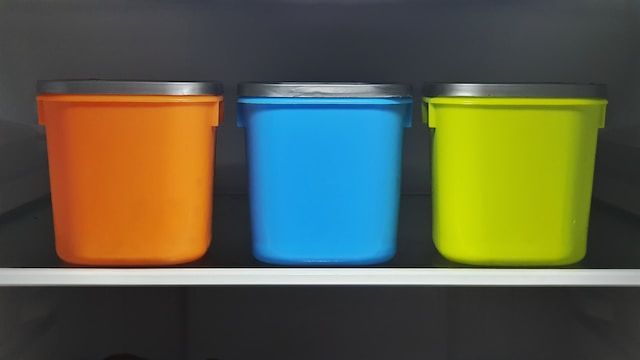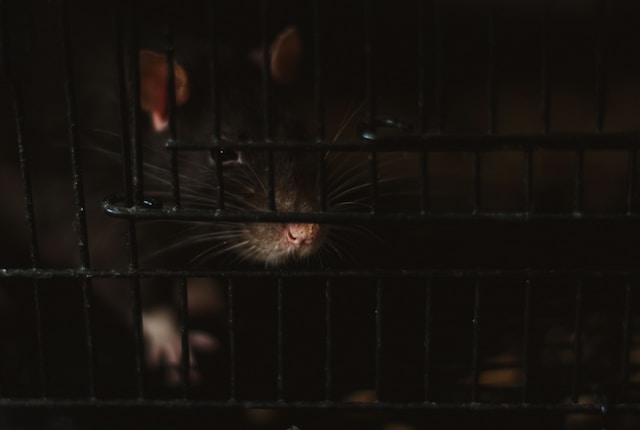Rat bait boxes are an integral part of an effective pest control plan, providing a safe and targeted way to attract, poison, and eliminate troublesome rat populations. In this comprehensive guide, we will walk you through the process of creating your very own rat bait box from scratch.
Step-by-Step Instructions For Your Rat Bait Box
Before you get started, here’s a list of materials you may need:
- A Container
- Platform Material
- Rat Bait or Poison
- Small Dish or Bowl
- Gloves
Step One: Prioritize Safety
Before creating your DIY rat bait box, let’s talk safety. Begin by grabbing a pair of sturdy, protective gloves. These gloves are your armor against potential health risks from handling rat bait or encountering rodents.
Rats can carry diseases, and minimizing any chance of exposure during this process is essential. Gloves provide a protective barrier that significantly reduces the risk of contamination or infection.
Step Two: Choose Your Container Wisely
Now that your gloves are on, choose a suitable container for your rat bait box. The container is the foundation of your rodent control efforts, and selecting the right one is crucial for success.
When selecting a container, ensure it is durable and difficult for rats to penetrate. Sturdy plastic or metal containers are excellent options.
Equally important is the lid – it should fit snugly, leaving no room for rats to pry it open.
Step Three: Preparing the Bait
To fill your rat bait box, choose a bait, follow the manufacturer’s guidelines, and fill a small dish. Precision and care are key when handling rat bait to attract rats while minimizing risks.
Step Four: Craft a Stable Platform
To create a stable platform for your container, cut a piece of scrap wood or cardboard to size to fit snugly within the container.
This platform serves two purposes: it provides a solid base for the bait container, preventing accidental spills that could render your bait box ineffective, and it creates an organized and accessible space within the box, optimizing the use of space and enhancing the overall functionality of your DIY box.
Step Five: Secure the Bait
Place the bait container carefully on the stable platform inside the larger box to prevent tipping or spills. A controlled environment is essential for successful rat population management.
Step Six: Create Inviting Entry Points
To design a practical rat bait box, create precise entry points for the rats. Cut small holes in the container’s material for the rats to enter.
The challenge here lies in making these holes large enough for rats to comfortably enter yet not so large that they invite access to larger animals or curious children.
Step Seven: Fortify Lid Security
Consider reinforcing the lid using tape or fasteners to provide maximum security to your DIY rat bait box. This additional measure will act as a deterrent and prevent rats from prying open the box to access the bait inside.
Step Eight: Strategic Placement
Position your DIY trap in areas with high rat activity or their frequently traveled paths. Consider proximity to food sources and shelter but prioritize safety by keeping it out of reach of children, pets, and non-target animals. Proper positioning increases the likelihood of rats discovering and interacting with the bait.
Step Nine: Regular Monitoring and Refilling
Creating a rat bait box is not a one-and-done solution. Regular monitoring is essential for its continued effectiveness.
Fresh, enticing bait in your DIY rat bait box is vital to successful rodent control. Periodically check the bait box to assess whether the bait needs replacement.
Step Ten: Proper Disposal of Deceased Rats
After eliminating rats with your bait box, use protective gloves to handle the deceased rodents and place them in a sealed plastic bag. Follow local regulations for proper disposal to mitigate any potential health risks.
When to Turn to the Experts

If your DIY rat bait box and other at-home pest control efforts prove ineffective, consider seeking professional assistance from experts like United States Pest Services. Here are scenarios where professional help is advisable:
- Persistent Rat Activity: A worsening rat problem may indicate a more extensive infestation than initially thought.
- Safety and Health Concerns: Professionals can safely manage hazardous materials if you’re worried about handling rat bait or potential health risks associated with rodents.
- Large-Scale Infestations: Severe infestations with numerous rats are best addressed by professional pest control services with the necessary experience, tools, and resources.
- Structural Damage: If rats have caused damage to your property or pose a risk of doing so, professionals can eliminate rodents and advise on repairs.
- Preventive Measures: Pest professionals can implement preventive measures to ensure long-term rat control.
- Health Conditions: If household members have health conditions affected by rodent infestations (e.g., allergies or respiratory issues), professional pest control can swiftly and comprehensively address the problem.
United States Pest Services has a team of experienced technicians equipped to handle various pest control challenges, including rat infestations. If DIY efforts fall short or for peace of mind, don’t hesitate to contact us for professional pest control solutions!

